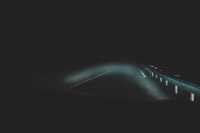
01 Aug Do Yellow Glasses Make Night Driving Better or Worse?
MedicalResearch.com Interview with:
Daejoon Alex Hwang, PhD
Instructor in Ophthalmology
Investigator,
Schepens Eye Research Institute of Mass. Eye and Ear
Harvard Medical School
MedicalResearch.com: What is the background for this study?
Response: Yellow night driving glasses are sold with promises to reduce headlight glare from oncoming traffic and help aging individuals see better at night. Despite a 1997 ruling by the Federal Trade Commission against one company’s claims, the products still remain popular online.
We tested three commercially available yellow lens night driving glasses and compare their effectiveness with clear lens glasses on our novel headlight glare simulator in the driving simulator.
MedicalResearch.com: What are the main findings?
Response: We found no differences in road hazard (i.e. pedestrian) detection performance among the three pairs of yellow glasses. More importantly, we also found that the yellow glasses didn’t improve performance compared to the clear glasses, and more likely reduce the detection performance.
MedicalResearch.com: What should readers take away from your report?
Response: Whether you’re wearing yellow, red, or blue lenses, they cut/filer out a chunk of lights which are basically the same as wearing sunglasses when driving at night. Even if wearing the yellow lens night driving glasses may make the wearer ‘feels’ like having a brighter view, it does not really improve the vision. We think that it may make the overall night driving riskier because the wearer will overconfidence on their night vision.
MedicalResearch.com: What recommendations do you have for future research as a result of this work?
Response: Related to the yellow lens night driving study, it will be interesting to study why people ‘feel’ brighter with yellow lens glasses even though they performed worse with it. There are few hypotheses on this phenomena but we have not seen any direct evidence for it.
MedicalResearch.com: Is there anything else you would like to add?
Response: Impact of headlight glare and night driving performance is largely understudied. We have been working on the impact of various eye diseases such as cataract and age-related macular degeneration (AMD) on nighttime driving and headlight glare because they are known to increase glare and glare recovery. We will use our study platform (a headlight glare simulator with the driving simulator) to investigate their impact.
Nothing to disclose. The study was funded by NIH
Citation:
[wysija_form id=”3″]
[last-modified]
The information on MedicalResearch.com is provided for educational purposes only, and is in no way intended to diagnose, cure, or treat any medical or other condition. Always seek the advice of your physician or other qualified health and ask your doctor any questions you may have regarding a medical condition. In addition to all other limitations and disclaimers in this agreement, service provider and its third party providers disclaim any liability or loss in connection with the content provided on this website.
Last Updated on August 1, 2019 by Marie Benz MD FAAD

